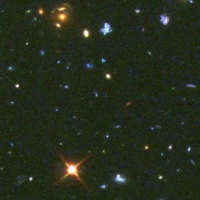Classifying galaxy type using the ESA Euclid space telescope
Spring 2014
Master Semester Project
Project: 00275

Galaxies have been historically categorized according to their apparent shape, usually referred to as their visual morphology. Two main types can be discriminated, namely spiral and elliptical galaxies. Being able to assess the category of a given galaxy is very important for cosmology and has profound implications on our understanding of the universe as the shape of the galaxy gives direct information on the properties of the stars that compose it. For this reason, the ESA Euclid space telescope will be sent on a mission to capture images from space which will help characterising the universe that surrounds us. While Euclid will only fly in 2019, a large quantity of data is already available and can be used to carry out galaxy classification. We propose to use image processing and machine learning tools to design a classifier that will be able to discriminate the galaxy types in the database of the satellite. The work will consist of building a feature vector that captures the morphological differences between spiral and elliptical galaxies. This collection of descriptors will then be fed into a classification algorithm in order to assess whether a given element is more likely to be a spiral, an elliptical galaxy or background.
The work is in direct collaboration with EPFL's laboratory of Astronomy (Dr. Courbin).
- Supervisors
- Daniel Schmitter, daniel.schmitter@epfl.ch, 21 693 5136, BM 4.138
- Michael Unser, michael.unser@epfl.ch, 021 693 51 75, BM 4.136
- Virginie Uhlmann, virginie.uhlmann@epfl.ch, BM 4.142, Tel: 021 693 1136